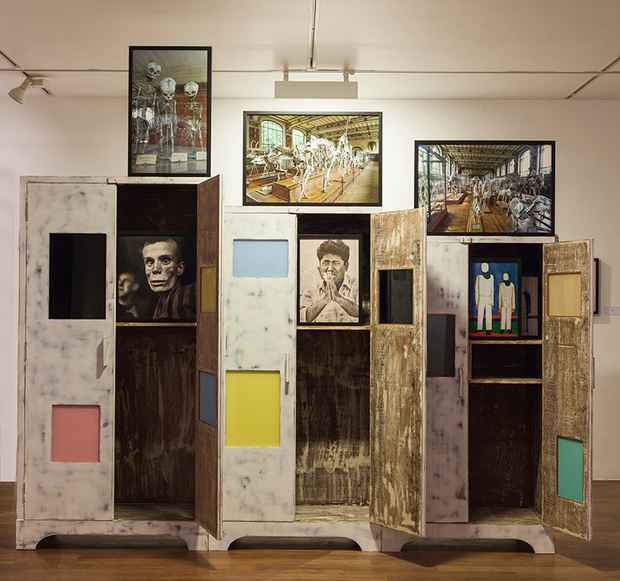“After Midnight: Indian Modernism To Contemporary India 1947/1997” Exhibition
Queens Museum of Art

This event has ended.
The era following India’s 1947 independence was marked by the emergence of Indian modern art led by the Progressive Artists’ Group and their contemporaries. A half-century later, the year 1997 signaled the beginning of a new phase with Indian artists gaining sudden visibility in a newly globalized contemporary art world, while India experienced a surge of paradigm shifts including economic liberalization, political instability, and the growth of a religious right-wing. After Midnight: Indian Modernism to Contemporary India, 1947/1997 presents the juxtaposition of these two historical periods in Indian art for the first time, examining Indian modern art from 1947 through the 1970s, and contemporary art from 1997 to the present.
Featured artists include: CAMP, Nikhil Chopra, Desire Machine Collective, Atul Dodiya, Anita Dube, V.S. Gaitonde, Sheela Gowda, Shilpa Gupta, Subodh Gupta, M.F. Husain, Tushar Joag, Jitish Kallat, Krishen Khanna, Ram Kumar, Tyeb Mehta, Akbar Padamsee, Prajakta Potnis, Sreshta Rit Premnath, Raqs Media Collective, S.H. Raza, Sharmila Samant, Mithu Sen, Dayanita Singh, F.N. Souza, Tallur L.N., Asim Waqif.
Taking its title from the phrase “Midnight’s Children,” coined by Salman Rushdie in his seminal 1981 novel about India’s transition to independence, the exhibition weaves themes of art and nation-building to reveal shifting zeitgeists in cultural production, and explores how these artistic practices regard and contest a geopolitical consciousness through modernization and globalization.
After Midnight presents works by the core members of the Progressives – M.F. Husain, S.H. Raza, and F.N. Souza – and their peers Ram Kumar, Krishen Khanna, V.S. Gaitonde, Tyeb Mehta, and Akbar Padamsee. The exhibition illuminates the journey of these eight artists, examining their work from the 1950s through the 1970s, tracing their influences and engagement with internationalism. While each made requisite visits to Europe in the 1950s, it was during Rockefeller-funded trips to New York City that their work was infused with a new level of experimentalism. To highlight this relationship with New York, After Midnight presents a body of film, photography, and chemical prints inspired by the artists’ interaction with the city’s artistic energy as well as a collection of ephemera from the same period.
Critically reflective of the changes witnessed after the economic liberalization and waves of globalization, the artists and works chosen for the contemporary section of After Midnight distinguish the exhibition not as a sweeping survey, but instead as an exploration of the particular avant-garde impetus within the two historical periods of Indian art. It seeks to engage with art practices that carry dialogues and questions emerging from an Indian context to be located within the larger global framework.
Media
Schedule
from March 08, 2015 to September 13, 2015
Opening Reception on 2015-03-07 from 17:00 to 19:00
Artist(s)
CAMP, Nikhil Chopra, Desire Machine Collective, Atul Dodiya, Anita Dube, V.S. Gaitonde, Sheela Gowda, Shilpa Gupta, Subodh Gupta, M.F. Husain, Tushar Joag, Jitish Kallat, Krishen Khanna, Ram Kumar, Tyeb Mehta, Akbar Padamsee, Prajakta Potnis, Sreshta Rit Premnath, Raqs Media Collective, S.H. Raza, Sharmila Samant, Mithu Sen, Dayanita Singh, F.N. Souza, Tallur L.N., Asim Waqif